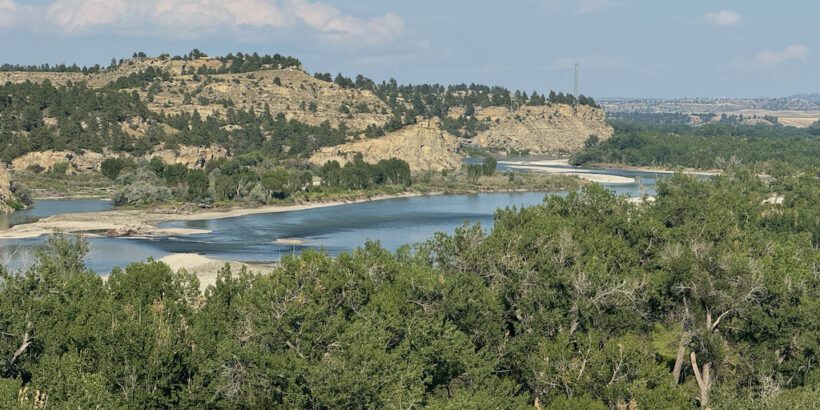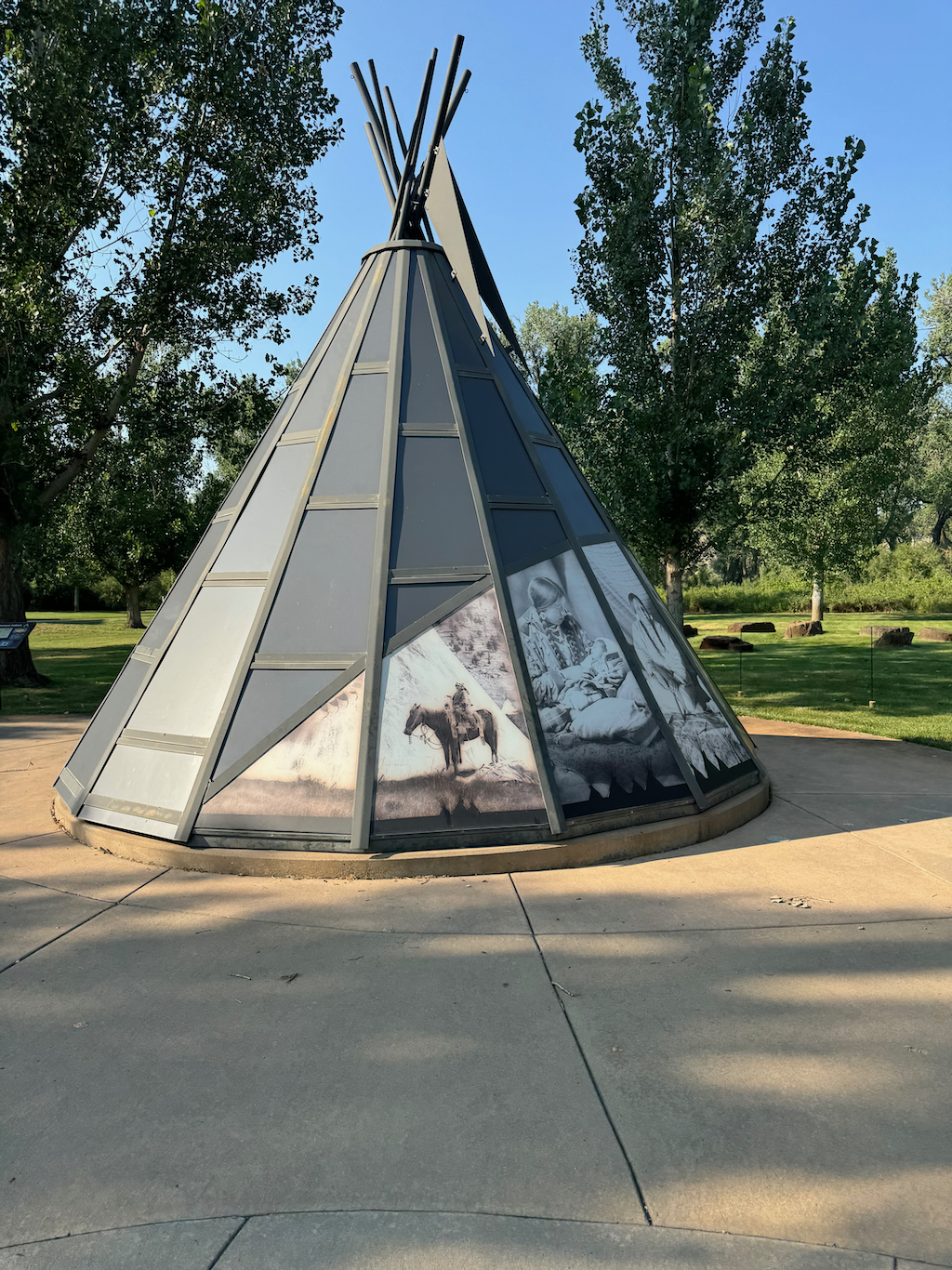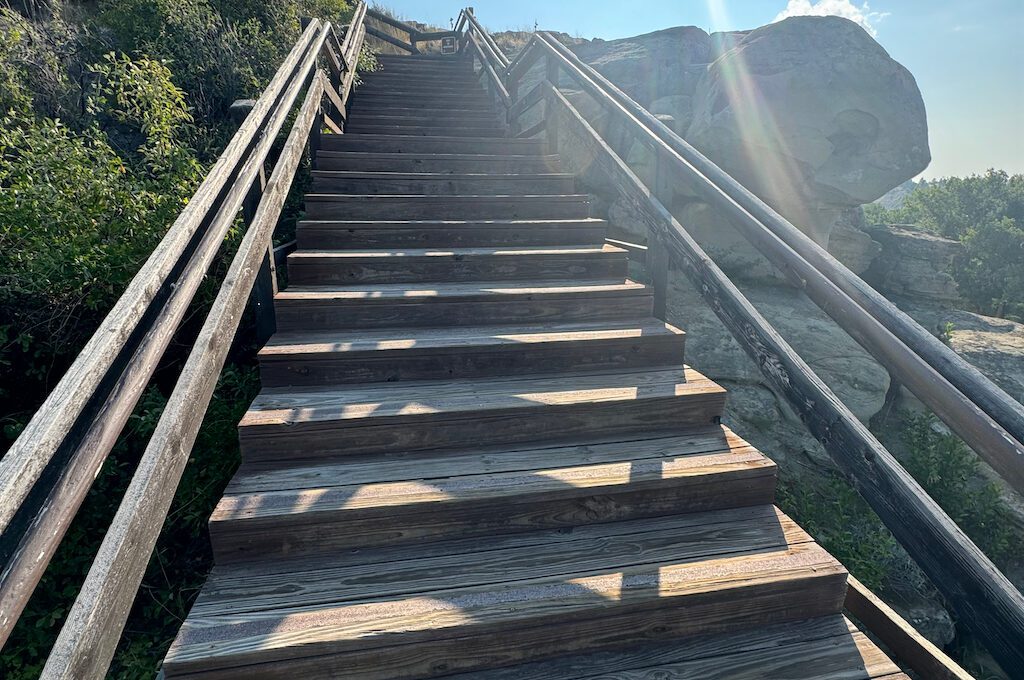Pompeys Pillar National Monument is a true hidden gem.
It stands out as being the place where you will find the only “on-site” physical evidence remaining from the Lewis and Clark expedition which is an engraved signature from William Clark that’s very well preserved.
This also means it’s one of the only places on the Lewis and Clark trail where you can be guaranteed to stand in the footsteps of members from the expedition, including Clark himself.
Pretty cool stuff for the history buff.
It’s a really easy site to get to which makes it even more worthwhile and below I’ll give you all the details you need to know before making a visit out here.
Where is Pompeys Pillar National Monument?
Pompeys Pillar National Monument is about 30 minutes east of Billings, Montana.
The address is: 3039 US Highway 312, Pompeys Pillar, Montana, 59064.
There is a a $7 standard fee is charged for each vehicle but if you have an inter-agency pass you can get in for free.
Get more info here.

Visiting Pompeys Pillar National Monument
Our visit came on a hot summer day as we were passing through after finally hitting all 50 US states!
I’d seen Pompeys Pillar National Monument mentioned as a noteworthy stop when in the Billings area but I didn’t know exactly what its significance was. Lucky for me, I was in for a surprise.
We arrived just after they closed the gate at around 5 PM and so I was a little bit worried that we would not be able to visit.
However, after checking out the entrance sign I was assured that it would remain open to foot traffic until sunset. (So it’s basically just closed off at night.)
The catch when visiting after the gate closes (but before dark) is that you have to walk about 3/4 of a mile from the gate to get there. It’s a walk along a flat road so not a big deal, although with the heat it was a little bit warm with minimal shade.
(In total, the round-trip would involve 1.8 miles and just over at 100 feet in elevation game, so definitely an easy outing.)

Arriving at this hour meant we would not be able to explore the beautiful visitor center, which was a bit of a bummer because I know they have some interesting exhibits in there, including the journey of William Clark down the Yellowstone River, displays on native culture, flora and fauna, and J.K. Ralston paintings and sketches.
Still, even if you can’t make it inside they have some outdoor interpretive panels and a cool exhibit on the Yellowstone River Valley so you can trace the expedition.
The sandstone “pillar” rock formation stands out as you approach from the gates.
It towers about 120 feet tall and it’s one of the rare sandstone formations in the area.
So it’s not hard to imagine why it would be a point of interest for Native Americans for thousands of years and for the settlers coming through as well.
Soon, we arrived near the interpretive center where we found a lot of interesting interpretive panels telling the story of the expedition and featuring some of the journal entries from Clark. Interesting stuff, but it was a little bit too toasty for me too consume it all.
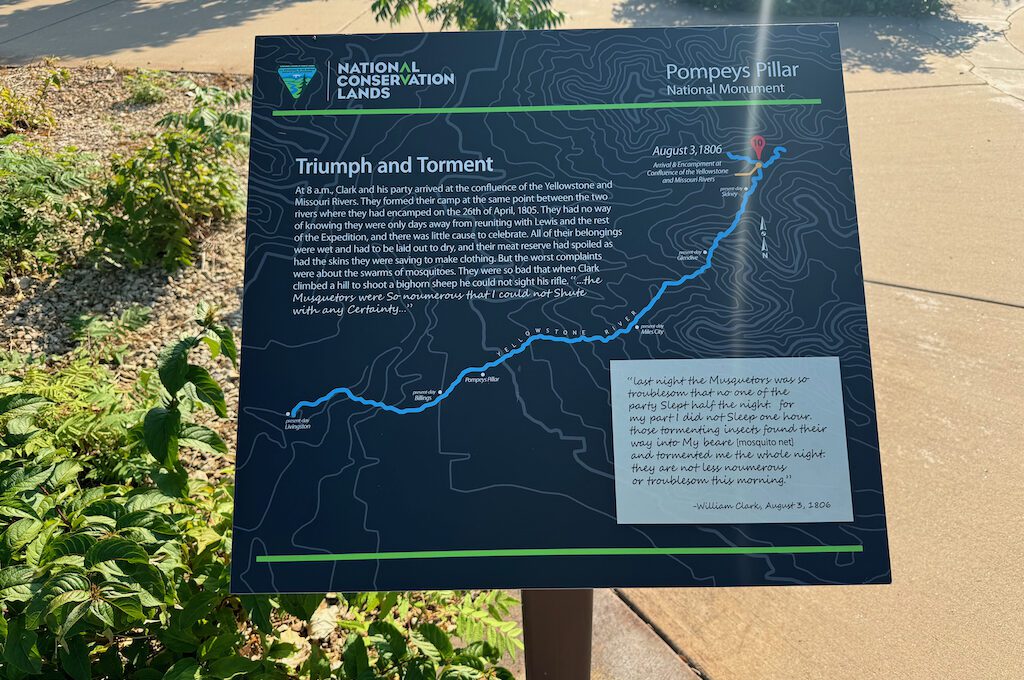
We then made our way to the wooden boardwalk steps that take you up on top of the rock.
It’s not an incredible amount of stairs but it’s enough to get you a little bit winded if you just plow through them. If you’ve been on the road for a while you’ll appreciate the exercise.
Also, there is plenty of railing along the stairs and boardwalks so if you have a fear of heights I honestly don’t think it should be an issue.
You’ll notice that there are security cameras throughout as they keep tight surveillance on the site in order to prevent vandalism. Given how many idiots there are out there, I fully support this type of “big brother” approach even if it is a little unsettling to see so many signs posted and cameras watching.
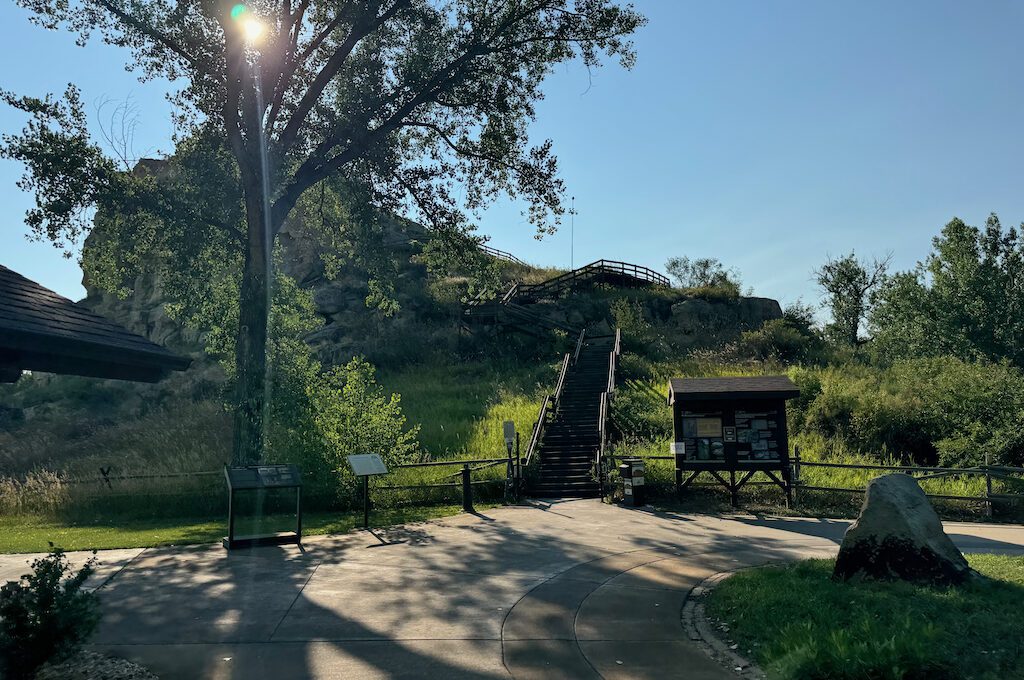
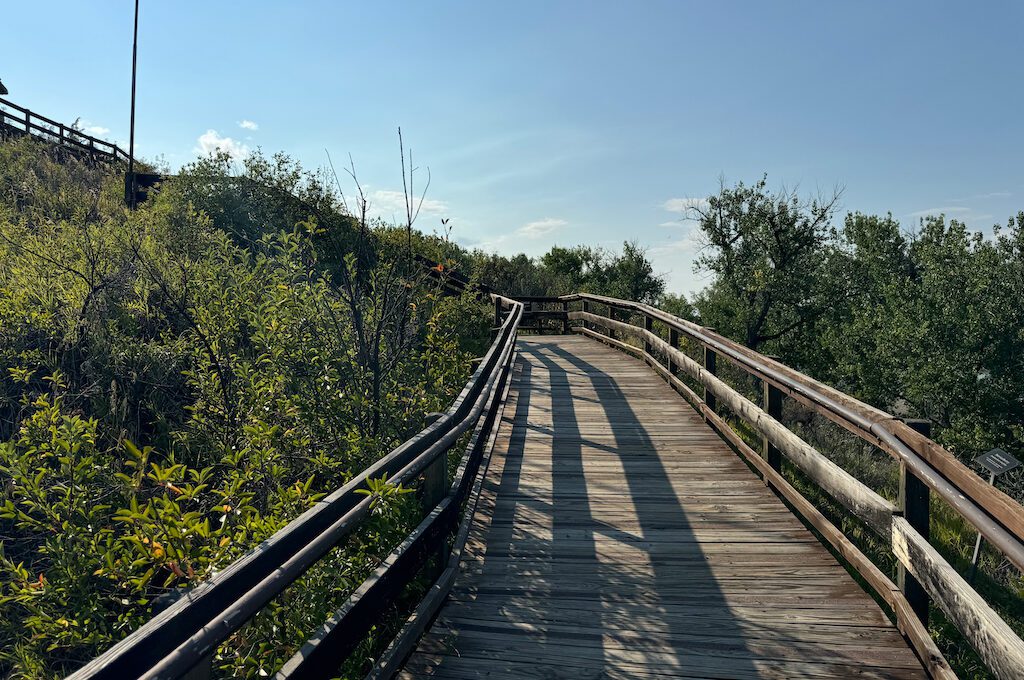

It doesn’t take you long to arrive to the marquee attraction which is the signature of William Clark. It’s protected by a locked panel and is well-preserved so there’s no mistaking that signature for anything else.
He dated the signature which was made in 1806 and he also mentioned to visit in his journal.
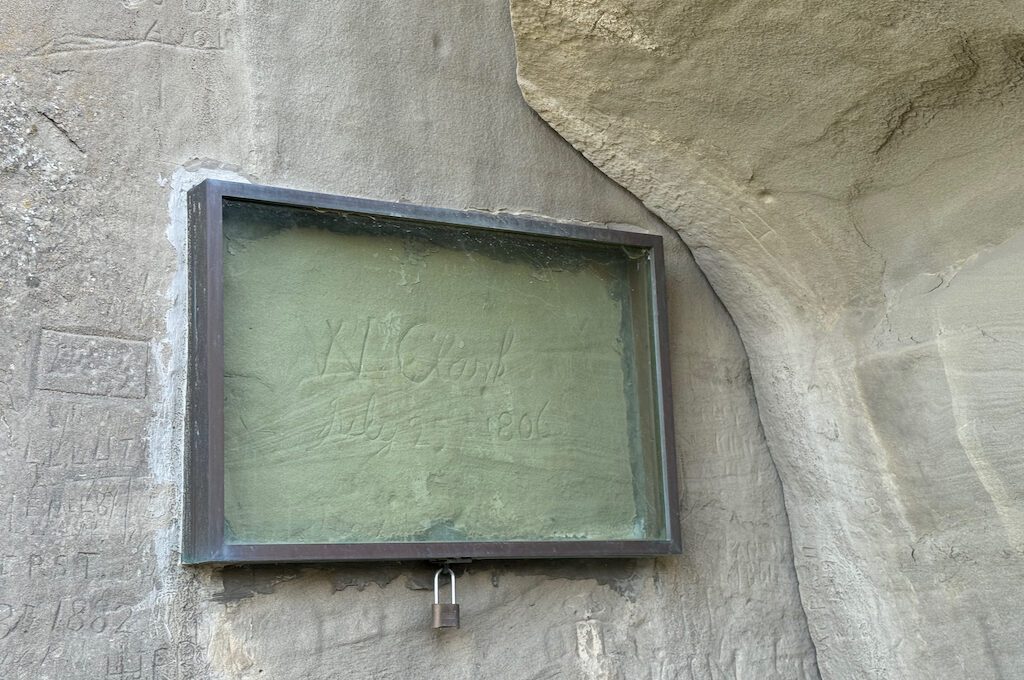
You’ll notice that there are some other engravings on the wall which come from a diverse range of people including fur trappers, military expeditions, and early settlers. It reminded me of our recent visit to Registration Rock in Idaho where names of pioneers from the 1800s are etched into rock.
There also are apparently hundreds of petroglyphs on the rock unfortunately I was not aware of until later on so I’m not sure exactly where they are.
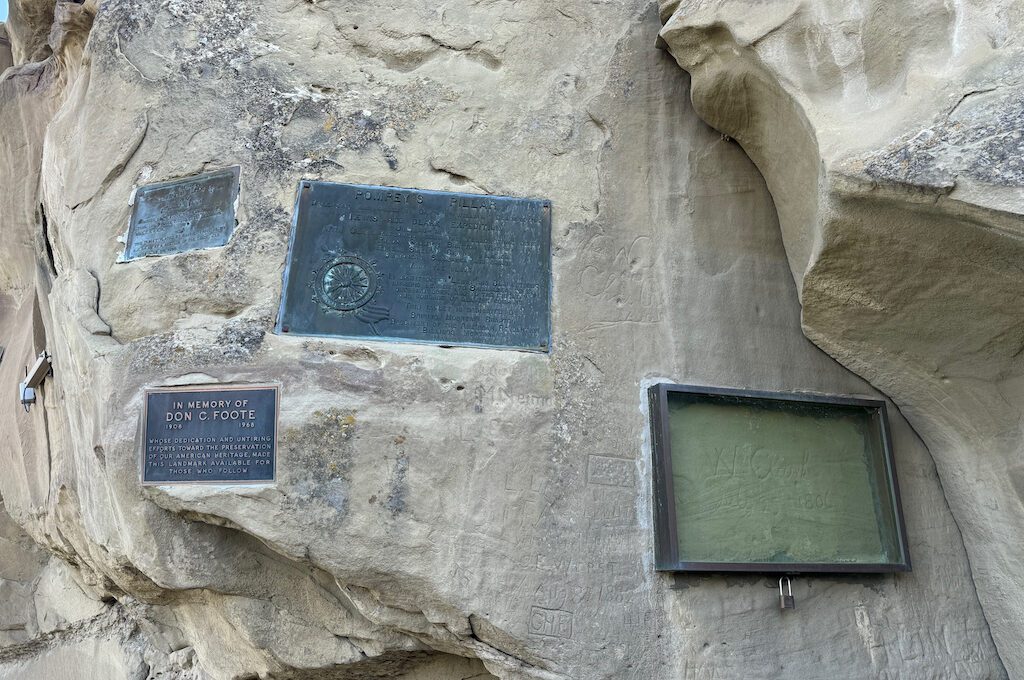
If you’re like me, you might be wondering where did the name “Pompey” come from?
Well, Sacagawea’s infant son, Jean Baptiste Charbonneau, was nicknamed Pomp. I believe Clark had a very close relationship to the boy and so he named the rock after him.
In his journal, Clark mentioned some of the wildlife like the bison herds, elk, and even wolves that lived in the area.
“…after Satisfying my Self Sufficiently in this delightful prospect of the extensive Country around, and the emence herds of Buffalow, Elk, and wolves in which it abounded, I decended and proceeded on…”
Of course, we are far removed from those days but we did come across a number of cuddly marmots while visiting.
After checking out the signature we then made our way to the summit of the rock. Once again, it’s not so bad — just a few flights of stairs. If you’re in anything close to decent shape it should not be a problem. Otherwise, just pace yourself and you’ll be fine.
From the top, you have a really nice view of the Yellowstone River and the surrounding area. There’s even a viewfinder that doesn’t require coins, which is a nice change of pace.
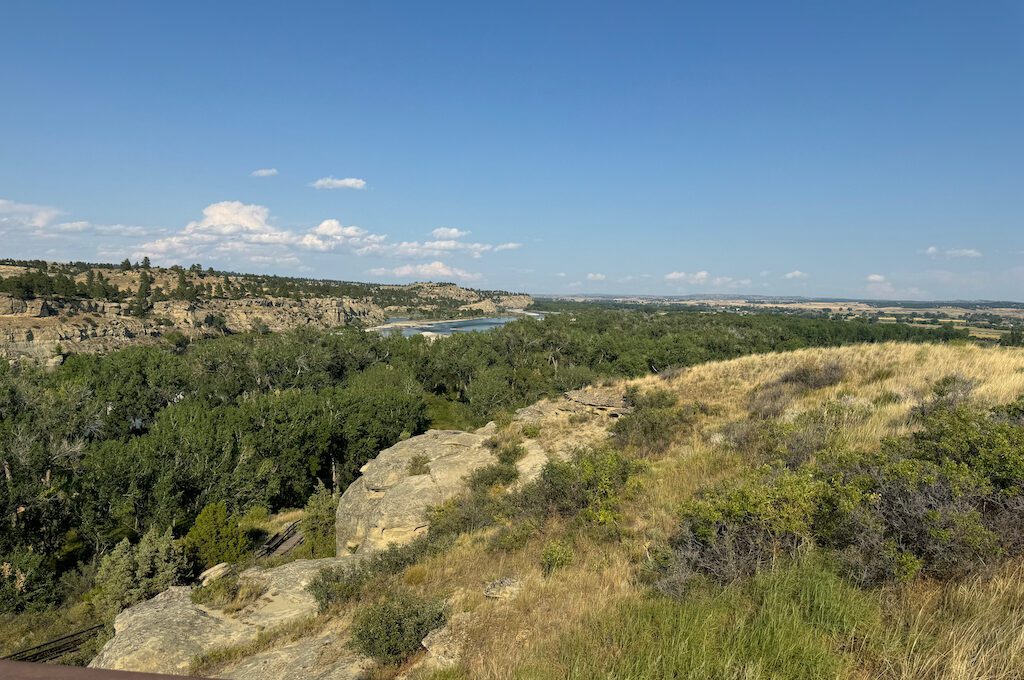
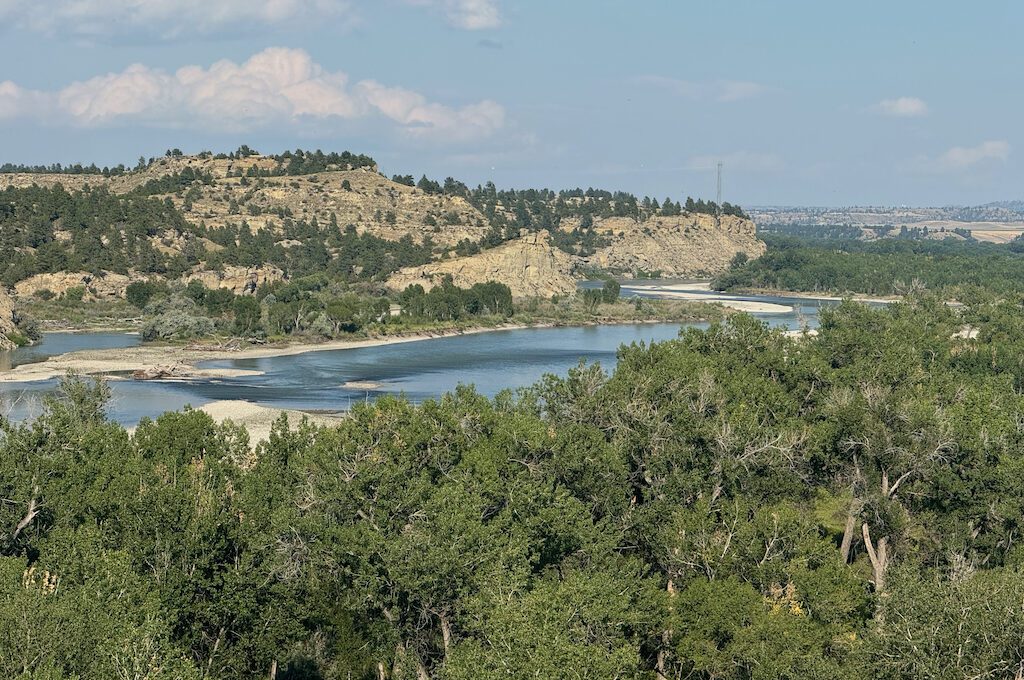
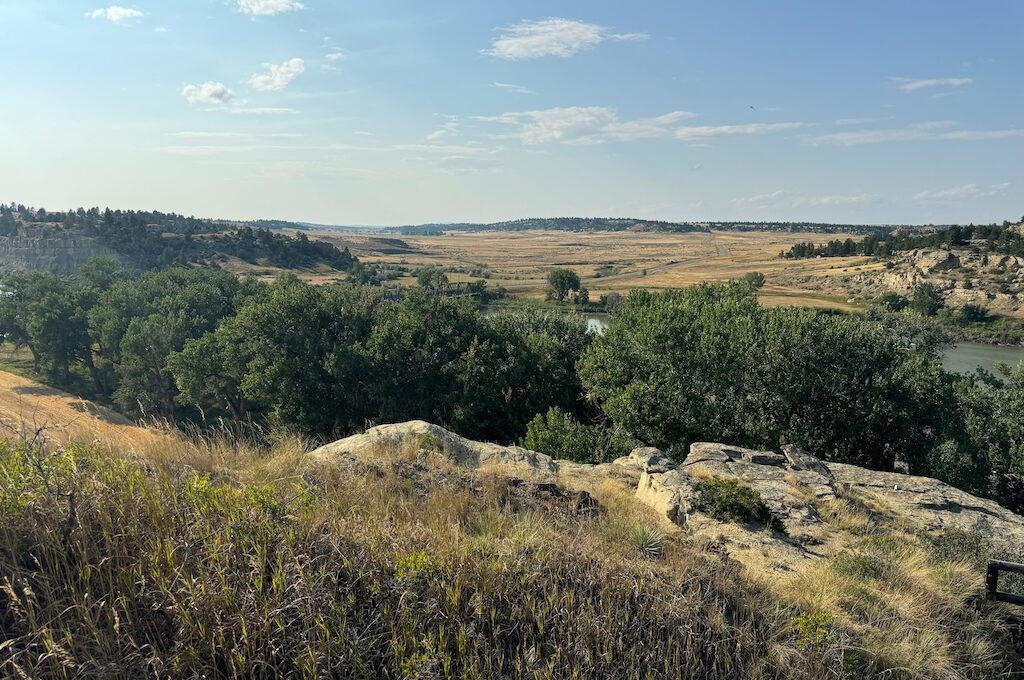
As tempting as it is to climb out onto some of the rocks just remember that they require you to remain on the boardwalk at all times.
After hanging out there for a few minutes and pondering some of the history that’s taken place we then made our way back down.

Even though we had to walk a little bit extra because we arrived after closing time, I thought this was the perfect pitstop. Hopefully, we will be back to check out some of the visitor center exhibit at a later date but I absolutely recommend checking this historical site.
Daniel Gillaspia is the Founder of UponArriving.com and the credit card app, WalletFlo. He is a former attorney turned travel expert covering destinations along with TSA, airline, and hotel policies. Since 2014, his content has been featured in publications such as National Geographic, Smithsonian Magazine, and CNBC. Read my bio.

